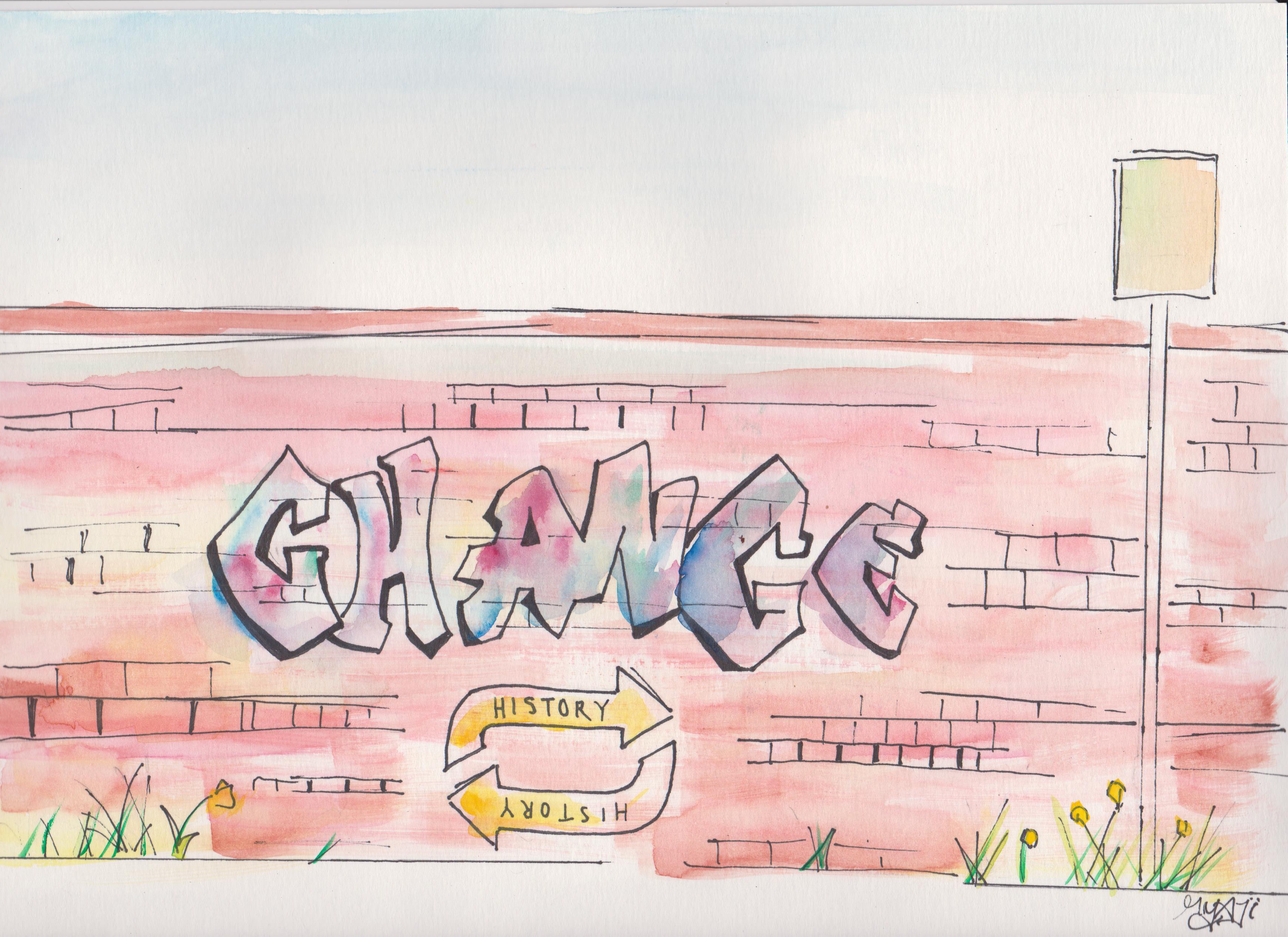Kahwa Café was more than just a safe haven from the cold night air last week, as it hosted the opening of “Khartoon!” – an exhibit from Sudanese, Qatar-based cartoonist Khalid Albaih. Presented by McGill’s Institute of Islamic Studies and the McGill Arab Students’ Association, the evening featured a fraction of Albaih’s numerous political cartoons – or, as he calls them, Khartoons, combining “Khalid,” “Khartoum,” and “cartoon” – as well as musical performances.
Addressing the packed cafe, Albaih spoke about his background and his initial foray into the creation of political cartoons to start off the event. His story began at home, where his family discouraged talk of politics due to the subject’s taboo nature in Sudanese society, and in the streets, where street art, one of his first loves, was illegal and dangerous. Albaih explained that this overwhelming sense of political oppression pervading his home and his art caused him to adopt his current mission, that of “simplify[ing] current situations for people who didn’t want to talk about [them].”
While Albaih’s art does just that, rendering the tangled web of international politics accessible, his cartoons are not lacking in depth or thought-provoking attributes. On the contrary, Albaih’s work, which largely addresses the Arab Spring protests, incites discussion through its (sometimes bitter) wit and popular cultural references. One piece, for example, shows Bashar al-Assad in the famous banner of the hit TV show Mad Men. Albaih explained to The Daily that because much of his audience encounters his art while scrolling on a phone, such eye-popping and recognizable images can deliver his message most effectively.
While al-Assad may or may not be a flirtatious, 1950s businessman, it is up to the viewer to make pertinent connections between the show’s subject matter and al-Assad’s regime.
Albaih’s work uses popular imagery to explore layers of meaning, opening the viewers’ eyes to something new through something familiar.
While engaging with popular culture, Albaih also critiques much of its mainstream rhetoric. One particularly thought-provoking piece on display shows two simple silhouettes – one an emaciated person, the other a photographer approaching the person. In the next scene, the photographer walks away saying, “Perfect!”, while the impoverished person lies on the ground, seemingly having collapsed from hunger. The use of silhouettes and a shadowy landscape makes for a poignant critique of how mainstream Western media uses tragic, out-of-context images to homogeneously portray international events. In this heartless interaction between the photographer and the individual, Albaih displays how most journalists only attempt to capture a tokenized image while staying emotionally distant from the subject, or even taking joy in their subject’s ‘picturesque’ suffering.
This piece could also serve as a critique of the quick and emotionally-detached practice of sharing popular images of international devastation on social media. This criticism also appears in another piece where the silhouette of a well-off individual gives a Facebook ‘like’ to the outstretched hand of a beggar, demonstrating the hypocritical nature of ‘Facebook charity.’
At the event, Albaih explained that his work took off in 2010 when his art went online, around the same time that the Arab world was bursting into revolutionary flames. With the rise of new political and social movements also came an uprising of activist art.
Albaih stated that the many people who spray-painted their ideas and artwork on the street walls and who died for these actions were people who “died for change.”
However, while much of Albaih’s art reacts to current political situations, he told The Daily that his art also tries to address the fact that “most people forget history.” Albaih wishes to “ask questions that involve memory,” critiquing the notion that radical events taking place today are an entirely new phenomena. “People don’t remember that only 60, 70, 80 years ago the Arab world was occupied.”
Simply put, Albaih’s art takes on the age-old saying that “history repeats itself.” His art depicts political figures dressed as ancient authoritarian rulers in one piece and in another image as the hand-puppets of larger entities. The images point to the repetitive, performative, and futile nature of political talks in the eyes of frustrated citizens. Egyptian president Abdel Fattah el-Sisi appears in Pharaoh’s clothes with his military uniform hung up on a coat rack – not only does the Pharaoh costume critique the recent accusations of human rights abuses in Egypt under the new regime, but it also calls into effect a broader historical narrative of the abuse of power by authoritarian rulers.
Simple in design, Albaih’s cartoons convey a wide range of emotions and potential interpretations. Without being vague, his artwork is open-ended and invites further exploration. Albaih himself agrees that his art is “a two-way street,” a call for people’s opinions and an open invitation to discuss. Certainly breaking from the de facto ban on discussion in his childhood home, Albaih has brought a new facet to political and artistic dialogue – a conversation he hopes to remain a part of and to encourage for as long as he can. Albaih’s art brings freshness to what some may consider the circular or static state of political dialogues, especially when it comes to more “serious” or academic settings. He invites us all to join these important dialogues, after a quick laugh.
